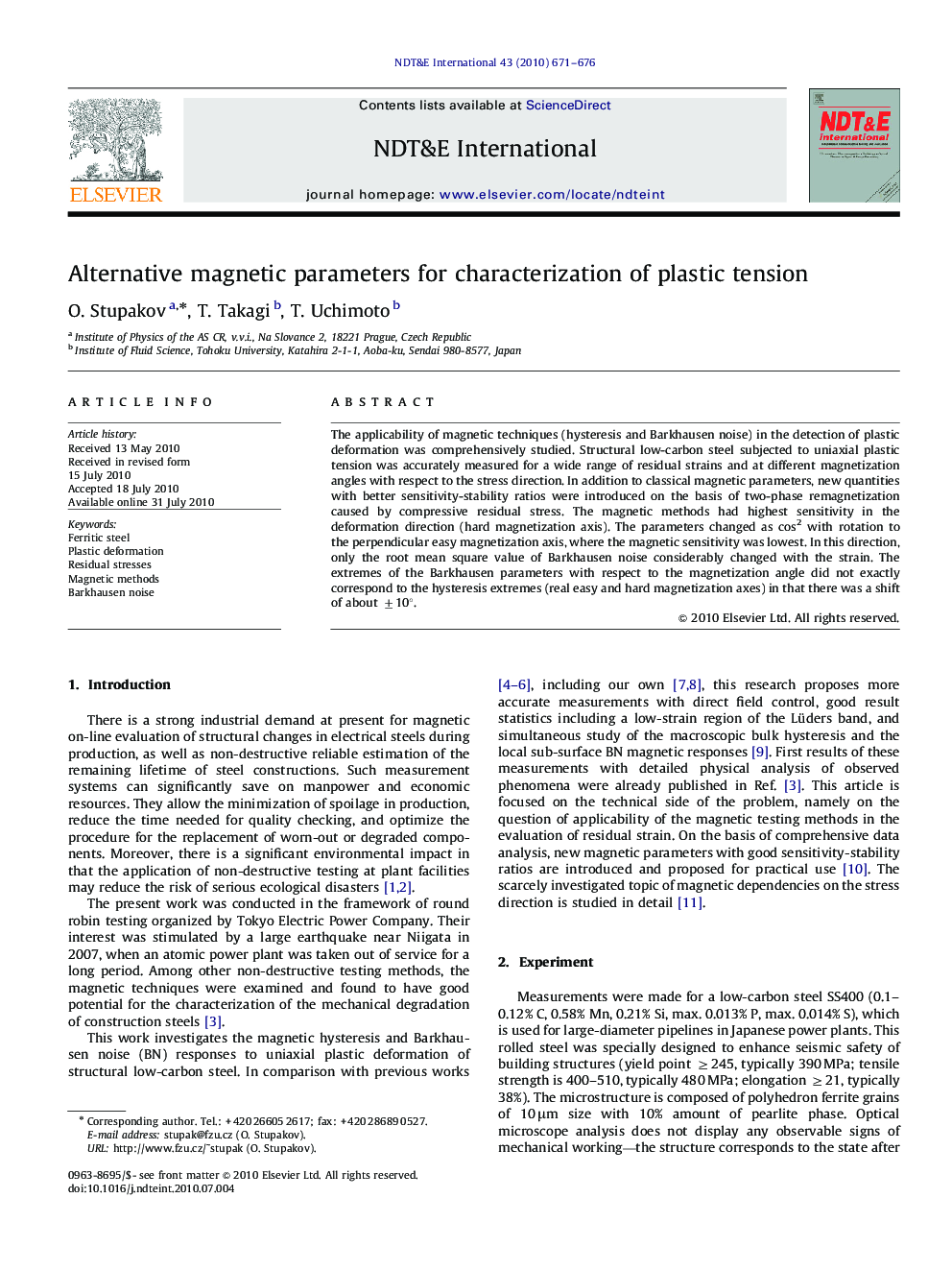| Article ID | Journal | Published Year | Pages | File Type |
|---|---|---|---|---|
| 295554 | NDT & E International | 2010 | 6 Pages |
The applicability of magnetic techniques (hysteresis and Barkhausen noise) in the detection of plastic deformation was comprehensively studied. Structural low-carbon steel subjected to uniaxial plastic tension was accurately measured for a wide range of residual strains and at different magnetization angles with respect to the stress direction. In addition to classical magnetic parameters, new quantities with better sensitivity-stability ratios were introduced on the basis of two-phase remagnetization caused by compressive residual stress. The magnetic methods had highest sensitivity in the deformation direction (hard magnetization axis). The parameters changed as cos2 with rotation to the perpendicular easy magnetization axis, where the magnetic sensitivity was lowest. In this direction, only the root mean square value of Barkhausen noise considerably changed with the strain. The extremes of the Barkhausen parameters with respect to the magnetization angle did not exactly correspond to the hysteresis extremes (real easy and hard magnetization axes) in that there was a shift of about ±10°.
